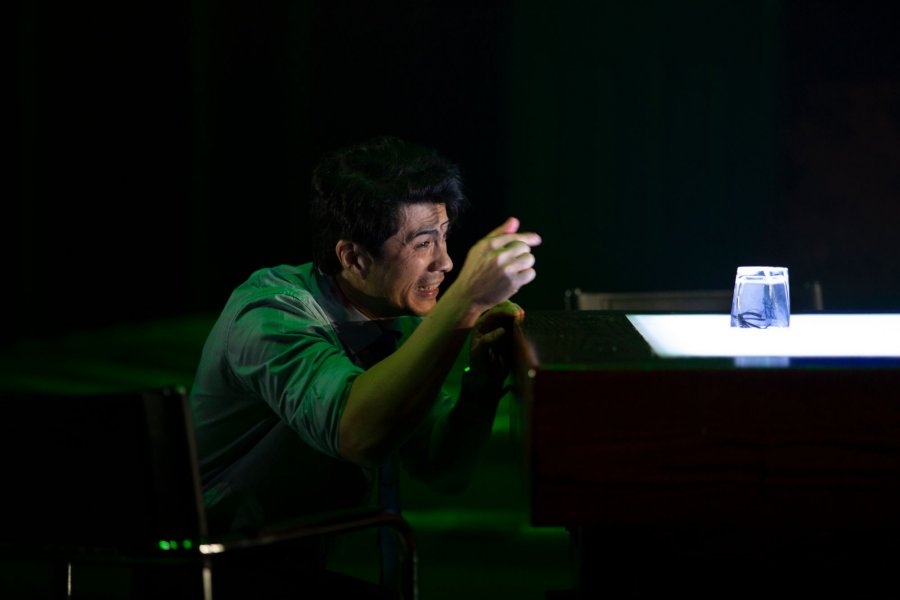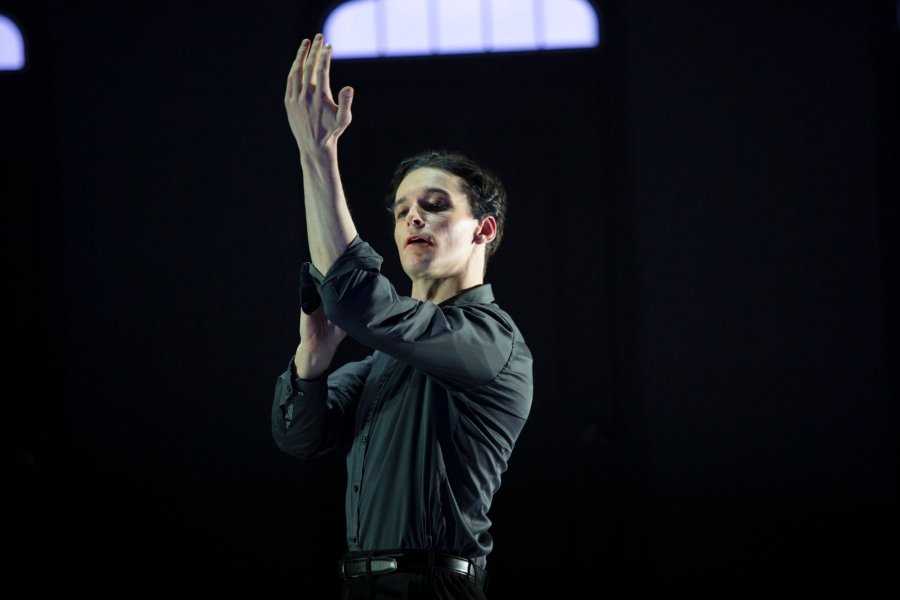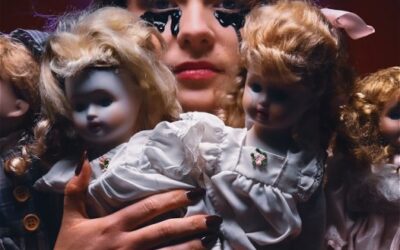By Jessica Taurins
The myths of vampires (at least the vampires we know today) have been around since the 18th century. Revenants with long nails and hair, and lips stained red with blood, wandering towns and draining poor souls who happened to cross their paths. The tale of the vampire Nosferatu is more recent, a film retelling of Bram Stoker’s Dracula made in 1922, changed just enough to avoid copyright infringement.
Even more recent is Keizah Warner’s re-retelling of the Nosferatu story, commissioned by Melbourne’s Malthouse Theatre (with support from the Malcolm Robertson Foundation) to be presented and performed on their hallowed grounds, just over 100 years after the original film was released.
Warner discusses the metaphor of vampires in her Writer’s Note in the show’s programme, noting the difference between the obvious – the chaos, the immortality, the seductive nature of something inhuman desperately desiring what’s inside you – and the greater global influence of willingly inviting evil into your home. Her show is a fantastic balance between the physical – what the audience can see and hear on the stage – and the mental – the tension that bleeds into the crowd, and the anticipation of what will come next – and it couldn’t be a better way to spend an evening.
The audience are greeted by Romanie Harper’s set as they enter – six closed doors, a table, and what looks like intricately carpeted ground. Each scene spreads across the stage without walls or barricades, a nurse’s office to the right, a dining room to the left, but as the show progresses the scenes spill across each other as though the small town is collapsing in on itself.

Set in small town Tasmania, a mining town where the ground is on the verge of death, Nosferatu is slow to start, like the town itself. The cadence of dialogue is confusing, with characters at some points appearing to talk at each other rather than to each other, as though they’re all just playing out their roles – mayor, journalist, nurse – before the titular vampire moves in. Perhaps a stylistic choice in the direction or writing, but a bit of a strange one as relating to each character becomes difficult in the first third of the show.
The costumes are well designed, perhaps a little too trendy for a dying Tasmanian town, but each character is defined easily by their clothes. As the show progresses, more and more red begins to bleed into outfits in the form of shawls and cloaks, as well as across their arms and even onto the stage itself, raining from the ceiling at one moment and splashing across the ground. The slow transformation of the town into the vampire’s plaything is a delight to watch.
The casting is extremely strong for this show, with the vampire himself only standing slightly ahead of the others due to the inhuman actions afforded to him by his powers. Nosferatu (Jacob Collins-Levy) can see into other scenes onstage and isn’t affected by time skips as the other characters are. He peers into the souls of the other actors, the heat of his gaze burning through every audience member regardless of how far away from him they may be. Collins-Levy plays simultaneously seductive and humorous, terrifying to behold and yet almost endearing as the mocks the other characters for their blindness to his true nature.
The other players stand as his foils. Tom (Keegan Joyce) is small and lacks power, but feels such desire to be with Nosferatu, rather than be him. The mayor James (Max Brown) receives the vampire’s power yet rejects the blood desire, refusing to even consider killing a human until threatened with his own demise. Kate (Sophie Ross), the town’s nurse, is the one Nosferatu wishes to leave behind to tell the story of his success… or his failure. Ross plays well with the strong-willed Kate, caught between grieving for her inability to help her not-yet-deceased mother and protecting the town from the danger she sees growing. Ellie (Shamita Siva) is Nosferatu’s equal, as much as any human could be. Siva is stage-stealing as the ruthless town journalist, seeking challenge in everything she does, even up until the final moments of the show.
The special effects and sound design wonderfully complement the cast and set, with the aforementioned blood rain a real highlight. With all practical onstage effects – except one – the show manages to be magical, surrealist, and realistic simultaneously, an impressive feat for a sub-two hour performance. The sound design by Kelly Ryall is haunting and disconcerting, bringing the vampire to life again with his own distinct ringing noise constantly fluttering through the background.

Overall, and despite a potentially slow start, Nosferatu is a brilliant watch. Each element comes together to produce a spectacle that’s well worth the ticket price, and the modernisation of a classic story about lust, regret, power, and failure still manages to stand strong today. In our world, what are our vampires? Destruction of our environment through mining and construction? Obliteration of our healthcare system because of anti-vaccine protests and lack of care within communities? Should we listen to old money billionaires who work us hard for our entire lives and (metaphorically, in most cases) suck the life from us? Perhaps the tales of blood stealers are closer to our true lives than we really think.





